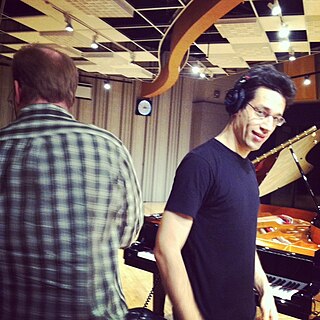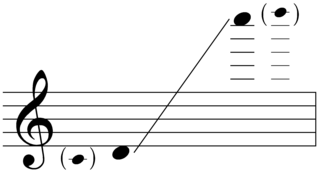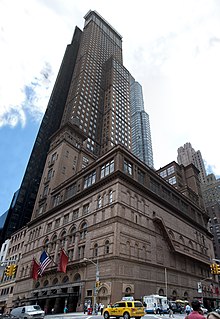
George Theophilus Walker was an American composer, pianist, and organist, who was the first African American to have won the Pulitzer Prize for Music. He received the Pulitzer for his work Lilacs in 1996.

Leon Fleisher is an American pianist and conductor.
Gary Graffman is an American classical pianist, teacher and administrator.
Jerome Lowenthal is an American classical pianist. He is chair of the piano department at the Juilliard School in New York. Additionally, Lowenthal is on the faculty at Music Academy of the West in Santa Barbara, California.

Ruth Laredo was an American classical pianist.
Miss Julie is an opera by Ned Rorem to an English libretto by Kenward Elmslie, based on the play, Miss Julie (1888), by Swedish playwright August Strindberg. It explores the subject of the intersection of social class and illicit sexual relations in late 19th-century Sweden.
Richard Danielpour is an American composer.

Walter Hendl was an American conductor, composer and pianist.

Jonathan Biss is an American pianist, teacher, and writer based in New York City. He is the co-artistic director of the Marlboro Music Festival.

Yuja Wang is a Chinese classical pianist. She was born in Beijing, began studying piano there at age six, and went on to study at the Central Conservatory of Music in Beijing and the Curtis Institute of Music in Philadelphia. By the age of 21 she was already an internationally recognized concert pianist, giving recitals around the world. She has a recording contract with Deutsche Grammophon. In an interview with the LA Times, she said “For me, playing music is about transporting to another way of life, another way of being. An actress does that.” Yuja Wang lives in New York City.

Daniil Olegovich Trifonov is a Russian pianist and composer. Described by The Globe and Mail as "arguably today's leading classical virtuoso" and by The Times as "without question the most astounding pianist of our age", Trifonov's honors include a Grammy Award win in 2018 and the Gramophone Classical Music Awards' Artist of the Year Award in 2016. The New York Times has noted that "few artists have burst onto the classical music scene in recent years with the incandescence" of Trifonov. He has performed as soloist with such orchestras as the New York Philharmonic, Cleveland Orchestra, Royal Philharmonic Orchestra, London Symphony Orchestra, Mariinsky Theatre Orchestra, Royal Concertgebouw Orchestra, Berlin Philharmonic, and the Munich Philharmonic, and has given solo recitals in such venues as Royal Festival Hall, Carnegie Hall, John F. Kennedy Center for the Performing Arts, Berliner Philharmonie, Théâtre des Champs-Élysées, Concertgebouw, and the Seoul Arts Center.
The Violin Concerto is a composition for solo violin and chamber orchestra by the American composer Ned Rorem. The work was commissioned by the Springfield Symphony Orchestra for the violinist Jaime Laredo and composed in 1984. It was first performed by Laredo and the Springfield Symphony Orchestra conducted by Robert Gutter in the Symphony Hall, Springfield, on March 30, 1985.
The Flute Concerto is a composition for solo flute and orchestra by the American composer Ned Rorem. The work was commissioned by the Philadelphia Orchestra and was composed between August 2001 and May 2002. Its world premiere was given by the flutist Jeffrey Khaner and the Philadelphia Orchestra conducted by Roberto Abbado at the Kimmel Center for the Performing Arts on December 4, 2003.
The Cello Concerto is a concerto for solo cello and orchestra by the American composer Ned Rorem. The work was commissioned by the Residentie Orchestra and the Kansas City Symphony for the cellist David Geringas. Its world premiere was given by Geringas and the Kansas City Symphony under the direction of Michael Stern on March 28, 2003.
The Symphony No. 3 is a composition for orchestra by the American composer Ned Rorem. The work was first performed by the New York Philharmonic under the direction of Leonard Bernstein at Carnegie Hall on April 16, 1959.
The Double Concerto is a composition for violin, cello, and orchestra by the American composer Ned Rorem. The work was commissioned by the Indianapolis Symphony Orchestra and composed between July 27, 1997 and April 1998. It was composed for the violinist Jaime Laredo and the cellist Sharon Robinson, who first performed the piece with the Indianapolis Symphony Orchestra conducted by Raymond Leppard in Indianapolis on October 15, 1998.
The Concerto for English Horn and Orchestra is a composition for solo English horn and orchestra by the American composer Ned Rorem. The work was commissioned by the New York Philharmonic to commemorate the orchestra's sesquicentennial anniversary. It was first performed by the soloist Thomas Stacy and the New York Philharmonic under the direction of Kurt Masur at Avery Fisher Hall on January 27, 1994. Rorem dedicated the piece to Thomas Stacy. The work is one of the few prominent contemporary English horn concertos, along with James MacMillan's The World's Ransoming.
















